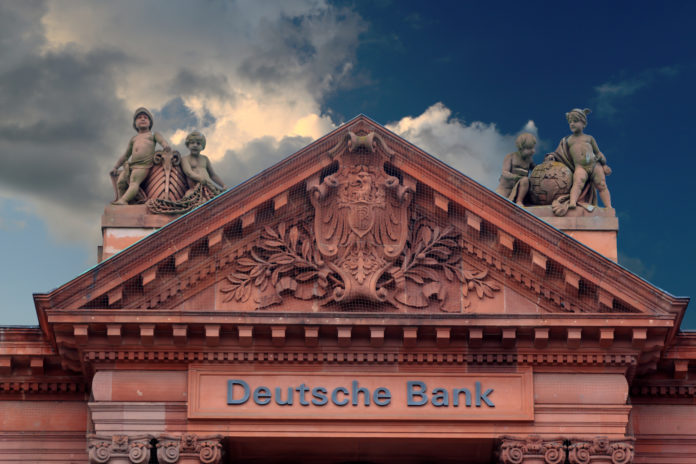Is Deutsche Bank Doomed?
Germany’s Deutsche Bank is the world’s 15th largest bank by total assets. Headed by CEO Christian Sewing, it is Germany’s largest banking institution and is part of the German DAX stock market index. The DAX is made up of 30 blue-chip German companies trading on the Frankfurt Stock Exchange.
The bank is a very troubled entity with many underlying causes, such as low profits, unsuccessful turnaround plans, and senior-level staff exits. For example, plans broke down this year when the merger with competitor Commerzbank AG didn’t go through.
The following illustrates what went wrong to this pillar of Germany’s banking system and how CEO Sewing plans to fix the troubled bank, according to an article in the New York Post and company sources.
As a side note, other European banks are facing difficulties thanks to Deutsche Bank’s troubles. And, as long as interest rates are near zero into 2020, revenue at retail banks will most likely remain down.
LOWER AND LESS
Deutsche Bank has experienced lower credit ratings and less return on investment – not to mention the 10 billion paid in settlements to the United States Justice Department for its role in the US financial housing debacle. Since then, Deutsche has exited the US housing market and is winding down its investment business.
Although it’s cutting costs to be more profitable, at the same time it’s losing business faster. The corporate investment banking unit responsible for “deal flow” and more than half of its total revenue lost market share to competitors who strengthened their balance sheets and improved governance standards faster than Deutsche post financial crisis.
TIME FOR A TURNAOURND
As part of CEO Sewing’s new turnaround strategy after his arrival in April 2018, Deutsche announced it’s cutting their workforce by 19,000 jobs. The United States will suffer the biggest hit on the investment banking side of the business. Instead of focusing on institutional clients, the CEO wants to help companies meet their trade finance and cash management needs.
Also, significant cuts will be made to equities and interest rates trading, which focuses on short-term lending markets and allows investors to gauge whether interest rates will go up or down.
A RETURN TO GREATNESS
The turnaround is from Business 101: Sewing’s strategy is to cut its losses with unprofitable businesses and use those funds for ones that he believes will grow.
The businesses Deutsche Bank plans to exit will leave it with billions of euros from assets it doesn’t want. It’s planning to create a dedicated unit to help sell or diminish those holdings, a solution sometimes referred to as a “bad bank.”
This separation will give a much-needed jolt to core operations results when it comes time for quarterly earnings reports. It will also give investors more confidence that the turnaround strategy is actually working, so in theory, its share price will rise.
Will the plan work?
Bank analysts are wary with good reason. They’ve heard these types of big plans from Deutsche Bank before, only to be disappointed by the outcome – the biggest concern being how Sewing plans to pay for massive restructuring costs.
However, when the cost-cutting and workforce reduction news became apparent, Deutsche Bank’s stock price rose a bit and its cost of credit insurance (the additional amount borrowed, that the borrower has to pay) went down.
That said, Sewing and Deutsche Bank have a big task ahead of them. At this point, it’s anyone’s guess.













